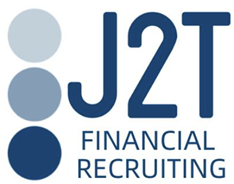Office structure has undergone yet another shift, with many companies embracing a transition toward hybrid or fully in-person roles. In fact, according to CNBC, 90% of companies say they will return to the office by the end of 2024, and only 2% of business leaders state their company never plans to require employees to work in-person. Understanding candidate preferences amidst this transition is pivotal to successfully reviving excitement for in-person positions. As organizations adapt, it becomes increasingly important to align offerings with the evolving desires of potential candidates.
Understanding Candidate Preferences
Attitudes towards in-person roles have evolved significantly, influenced by various factors such as work-life balance, the need for social interaction, and preferences for a structured office environment. In industries such as finance and accounting, there are benefits of in-person collaboration. An in-person environment fosters teamwork, facilitating quicker decision-making and problem-solving. Additionally, mentorship opportunities and skill development flourish in office settings, contributing to professional growth.
But how can employers convey this importance and make the office a place employees enjoy being?
Strategies for Attracting Candidates to In-Person Roles
Employers looking to attract talent to in-person roles can highlight unique benefits in job descriptions. Portraying the vibrant company culture and team dynamics specific to office settings can significantly appeal to candidates seeking an environment that encourages collaboration and camaraderie.
Free Lunch
Offering employee lunch was a surprisingly easy way to get employees back in the office post-pandemic, and it appears the incentive has stood the test of time. Employers who offer free lunch see an increase in coworker interaction, knowledge-share, and employee focus.
Depending on the size of an organization, offering free lunch a couple of times per week may be a practical incentive to boost employee desire to be in-office. However, for smaller companies, offering free lunch, even once a week, could be costly and financially irresponsible. Alternatively, having employee-preferred snacks in a break room can have a similar impact. Sending a quick survey to employees asking about snack preferences and then delivering on that request is a great way to incentivize employees in a similar way to free lunch. If you would like to read more on how offering free lunch is a powerful incentive and how to integrate it into your company, read our article that dives deeper here.
Intentionality
Leaders and decision-makers can make in-person roles more attractive by being intentional with employees’ time. If it is identified that a role should be 100% in-office, make sure to clarify why that decision was made and ensure that significance is understood by the person who holds the position.\
Foster Connection
84% of employees would be encouraged to come into the office if they could socialize with colleagues. People love to build relationships which can be fostered through several different avenues:
- Employee events: A breakfast event, themed party, book club, or team cooking lesson are all ways to get people back live, even if it is not during working hours. Events such as the ones above, can help soft launch people to become more excited about being present with colleagues.
- Pet-friendly offices: It is becoming more and more common to hear about offices allowing pets to come to work. In the US alone, 66% of households have a pet, with dogs being the most popular type. Millennials make up the largest percentage of the workforce, and 33% of them have a pet. Introducing pet-friendly policies into the workplace can uplift morale and cater to employee preferences while also enhancing the post-pandemic lives of our furry friends.
The workplace is undergoing a notable shift back toward in-person or hybrid roles, with many companies aiming to reintroduce in-office work by the end of 2024. Understanding candidate preferences is vital to reigniting excitement for in-person positions. Employers can attract talent by emphasizing a vibrant company culture, offering incentives, being intentional with in-office roles, and fostering connections through events or pet-friendly policies. By recognizing and addressing candidate preferences amid this transition, organizations can effectively revive interest in in-person roles, creating environments that prioritize social interaction and employee satisfaction.

